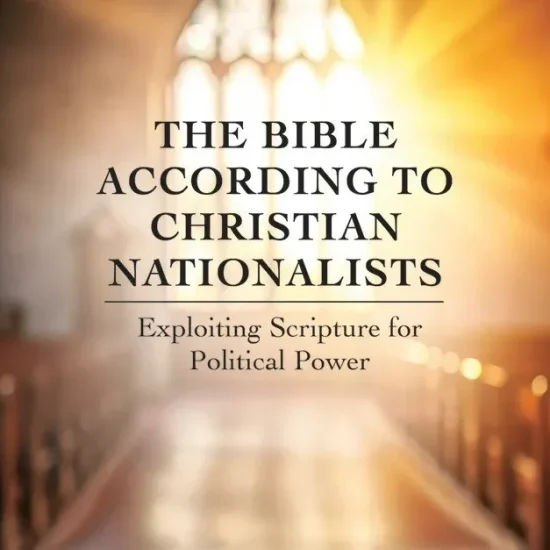

THE A TO Z OF THE NEW TESTAMENT: Things Experts Know That Everyone Else Should Too. By James F. McGrath. Grand Rapids, MI: Wm. B. Eerdmans Publishing Company, 2023. 304 pages.
One of the challenges facing Mainline Protestant churches, besides decline, is the problem of biblical illiteracy. Experience has shown me that adult Sunday School and serious Bible study have experienced an even greater decline than worship attendance. Whereas earlier generations of preachers might take for granted that their people knew the basic biblical story that is no longer true. It is one of the reasons why the kind of inductive preaching that Fred Craddock introduced decades ago is problematic. It is rooted in the expectation that people know the stories. So, how do we change this reality? What kinds of resources might speak to this challenging situation? There have been some interesting attempts to address the problem. Marcus Borg, for example, wrote several books that invited people to explore the story, but too often the resources have been less than helpful. Many of these problems are rooted not in the use of the historical-critical method by scholars but in how the results are shared. That is, congregants are often left with a deconstructed Bible that has nothing much to offer us as followers of Jesus. Besides many of these resources are rather dry.

Robert D. Cornwall
One of the contemporary biblical scholars who has proven himself to be anything but dry is James McGrath, the Clarence L. Goodwin Chair in New Testament Language and Literature at Butler University (Indianapolis). James made a name for himself as a blogger, but he is a serious scholar who knows how to communicate scholarly material in a way that reaches a larger audience than just scholars (he can do that as well). One of those resources is his book What Jesus Learned from Women (Cascade Books, 2021). Now McGrath has written a rather ingenious resource he’s titled The A to Z of the New Testament.
In this particular book, McGrath uses the alphabet to organize his exploration of the New Testament. His goal here is to share in an accessible manner what New Testament scholars using historical-critical tools know and what McGrath believes should be known by everyone. That is, he brings to a larger audience the kinds of materials that he would share in an introductory Bible course at his university. In other words, he shares the results of the historical-critical study of the New Testament in a way that brings the New Testament to life. He does so with humor. Those who have read McGrath’s Patheos blog posts as well as his books will know that he brings humor and creativity to his work.
This is how McGrath describes the methodology he uses in The A to Z of the New Testament: “Each chapter picks one topic that can be understood easily and then brings in the necessary information to explore it.” Having taught British high schoolers the New Testament after finishing his Ph.D. at Durham University, he writes that he is “convinced that if British teenagers can be expected to understand these things, then the vast majority of people in churches also can— and should be given the opportunity to do so” (p. 2). With that, I am in complete agreement.
In case you’re wondering, McGrath hasn’t organized his book as if it is a dictionary or an encyclopedia. There are plenty of such resources that might be worth adding to a personal library, but this is not such a resource. So don’t let the A and the Z lead you to that conclusion. What McGrath does here is introduce themes present in the New Testament. These are often problems that have emerged when it comes to understanding the New Testament. Then, in the course of the discussion of these themes and problems, McGrath introduces terms and tools that will help resolve the problem. In other words, the focus here is on the practical. His hope (and mine) is that this book will not only inform but invite the reader to dig deeper into the New Testament.
Now, I can’t go through each letter of the alphabet, so let me choose one of the letters (chapters) to illustrate what McGrath is up to. For our purposes, I’ve chosen the letter G, which stands for “Greasy Jesus?” Now there is an attention-grabbing chapter title! The focus here is on Jesus’ title/vocation as the Christ/Messiah. Why greasy? McGrath explains that the Greek word Christos means anointed (with oil), while the Hebrew term for the same is Mashiach. Thus, Christ and Messiah are essentially transliterations of the Greek and Hebrew. But this chapter isn’t just about these two words as McGrath goes into some detail as to the nature of transliterations in the New Testament, words that simply convert words from one form of text to another. Besides the word Christos/Christ, he discusses words like angels, Abba, and Maranatha, as well as place names such as Gethsemane and Golgotha, along with several other transliterated words including Boanerges (Sons of Thunder). Besides the discussion of the theme/problem and its possible solution, McGrath offers the reader a brief bibliography “For Further Reading.” He does so at the end of each chapter just in case you want to go further with the discussion.
Besides the letter G, I’ll say a word about the final chapter of The A to Z of the New Testament. In this chapter, McGrath lifts up several personal names that begin with the letter Z, which he points out is not the final letter in the Greek alphabet. That would be omega (you know, the Alpha to Omega—Α to Ω). In this final chapter, McGrath reiterates what he revealed in the opening chapter. That is, he can’t cover everything in a book of this size that one will find in the New Testament. He reminds us that this is an introduction that covers “the ABCs but in the process meanders casually through ‘the weeds,’ as some might put it, and eventually takes you from A through Z, covering a lot of genuinely challenging topics on the journey, hopefully without making anyone feel overwhelmed in the process” (p. 283). Wandering through the weeds can be fun, and while this is serious material that we find in the New Testament, having fun while studying it makes it more likely that we’ll stay with the process.
Having taught bible courses at a college level as well as bible studies in the churches I’ve served I know that not everyone is interested in a deeper understanding of the Bible. While it’s been a while since I taught bible courses, and that was in a bible college setting, I can’t vouch for the level of interest of the kinds of college students in studying the bible that McGrath encounters, and even in my experience at a bible college many of my students were quite happy with a surface knowledge, but from my experience with folks in the church, if given the opportunity to dive deeply into the Bible they get excited. They have lots of questions even if they don’t know much about the Bible. What they need is the opportunity. From experience, the best person to teach adults the Bible is the pastor, the person who hopefully has taken seminary courses in the Bible. There are a variety of ways of doing this. While McGrath’s book might not be the typical approach, I do believe people will enjoy reading it and exploring the topics lifted up here. These topics run the gamut from Christology to the authorship of particular books, including the ones that might not be written by the person to whom the book is attributed.
I want to conclude this review of The A to Z of the New Testament by noting something McGrath writes in his acknowledgments, which is placed at the end of the book. He writes:
Even with all the information that was undoubtedly new to readers, most things in this book can be explored in greater depths and with far more detail. I promise that there is more to be learned and that these texts have not finished unlocking their mysteries. I hope you will view the end of the book as the beginning of the journey. After the Z comes a new and richer A (p. 289).
If you choose, and I hope you will, to pick this book up and read it, I expect that it will make you want to know more, to dive deeper, to explore the deeper nuances of scripture. If, as I do, you believe the Bible to be the foundational text of the Christian faith (for me that involves both Testaments), then exploring it with some depth is important. You don’t have to have a Ph.D. in the Bible to do this, but you do need the kinds of information that James McGrath provides in The A to Z of the New Testament. So, pick up the Bible and McGrath’s book and have some fun as you dive deep into the Bible. If you do, I think you’ll develop a great appreciation for the Bible and be able to use the Bible responsibly in your own spiritual journey. That is, in my mind, as a retired pastor and bible teacher (I’m not a Bible scholar as my Ph.D. is in Church History), a very good thing!
This review originally appeared on BobCornwall.com.
Robert D. Cornwall is an ordained minister in the Christian Church (Disciples of Christ). Now retired from his ministry at Central Woodward Christian Church (Disciples of Christ) of Troy, Michigan, he serves as Minister-at-Large in Troy. He holds a Ph.D. in Historical Theology from Fuller Theological Seminary and is the author of numerous books including his latest “Second Thoughts about the Second Coming: Understanding the End Times, Our Future, and Christian Hope” coauthored with Ronald J. Allen. His blog Ponderings on a Faith Journey can be found at www.bobcornwall.com.






